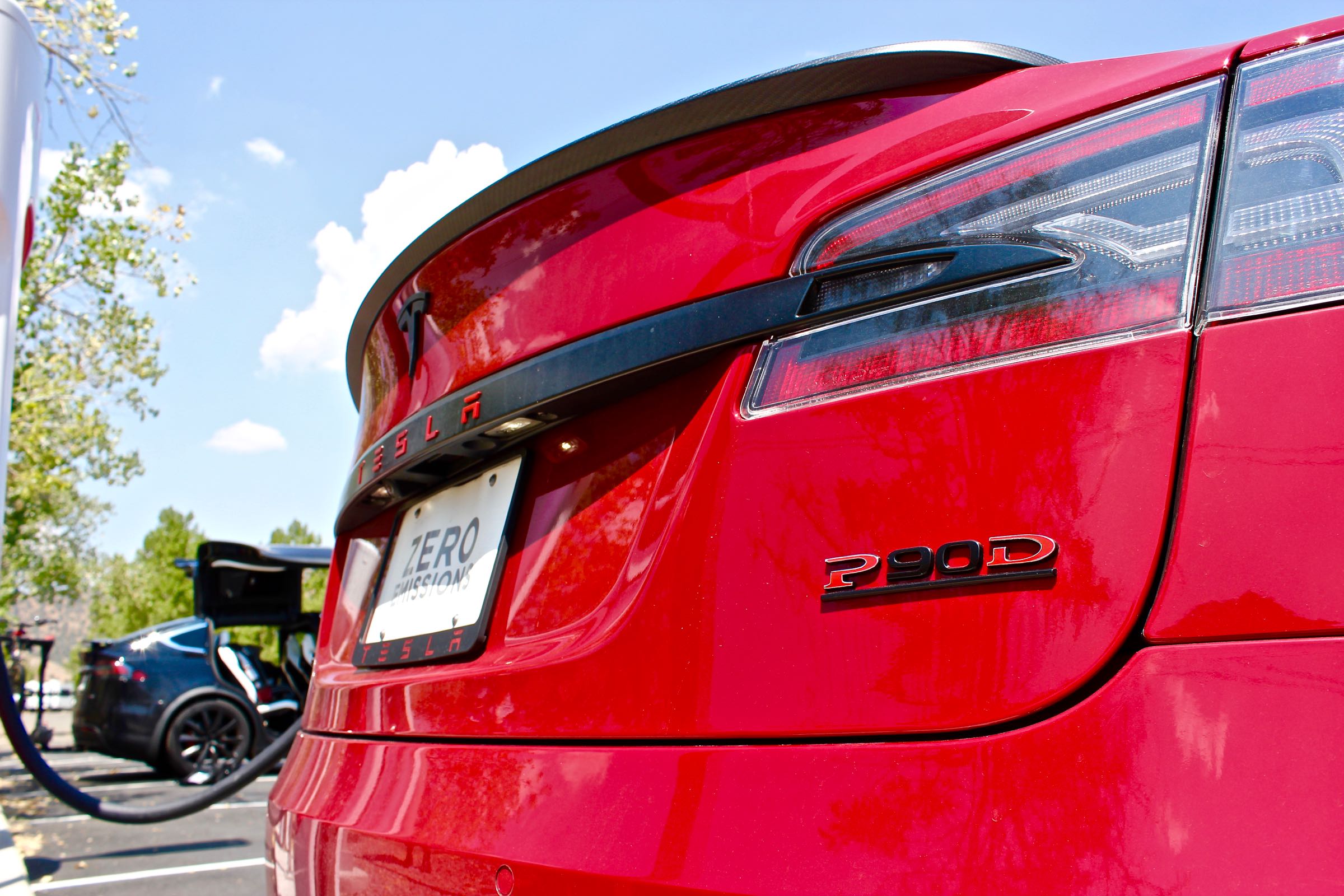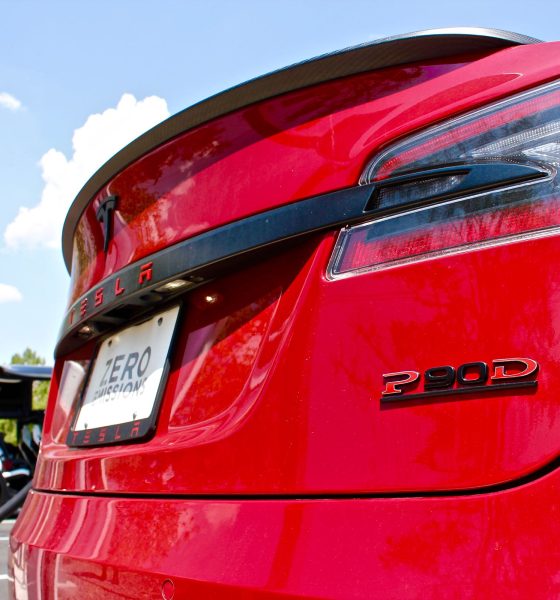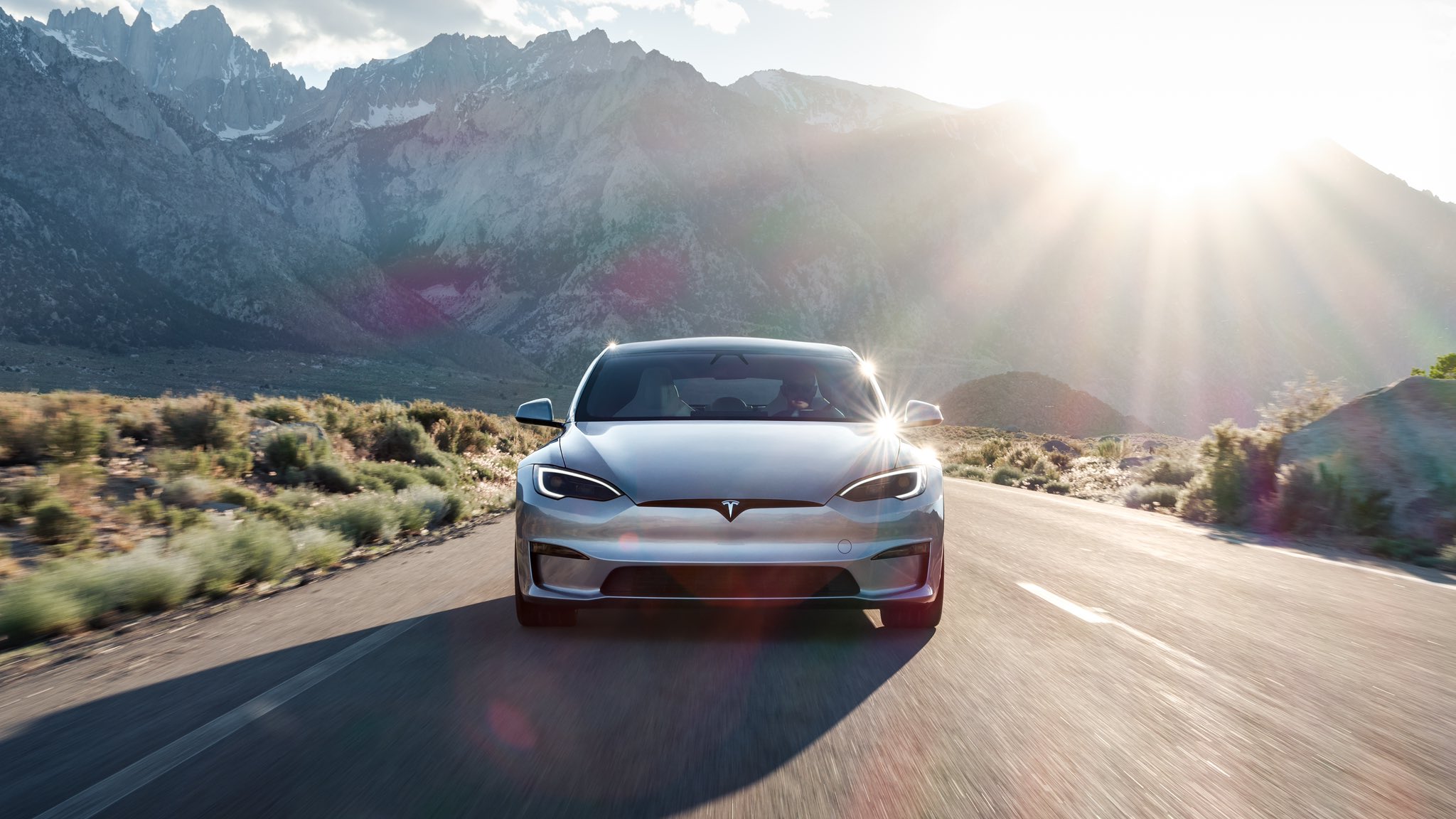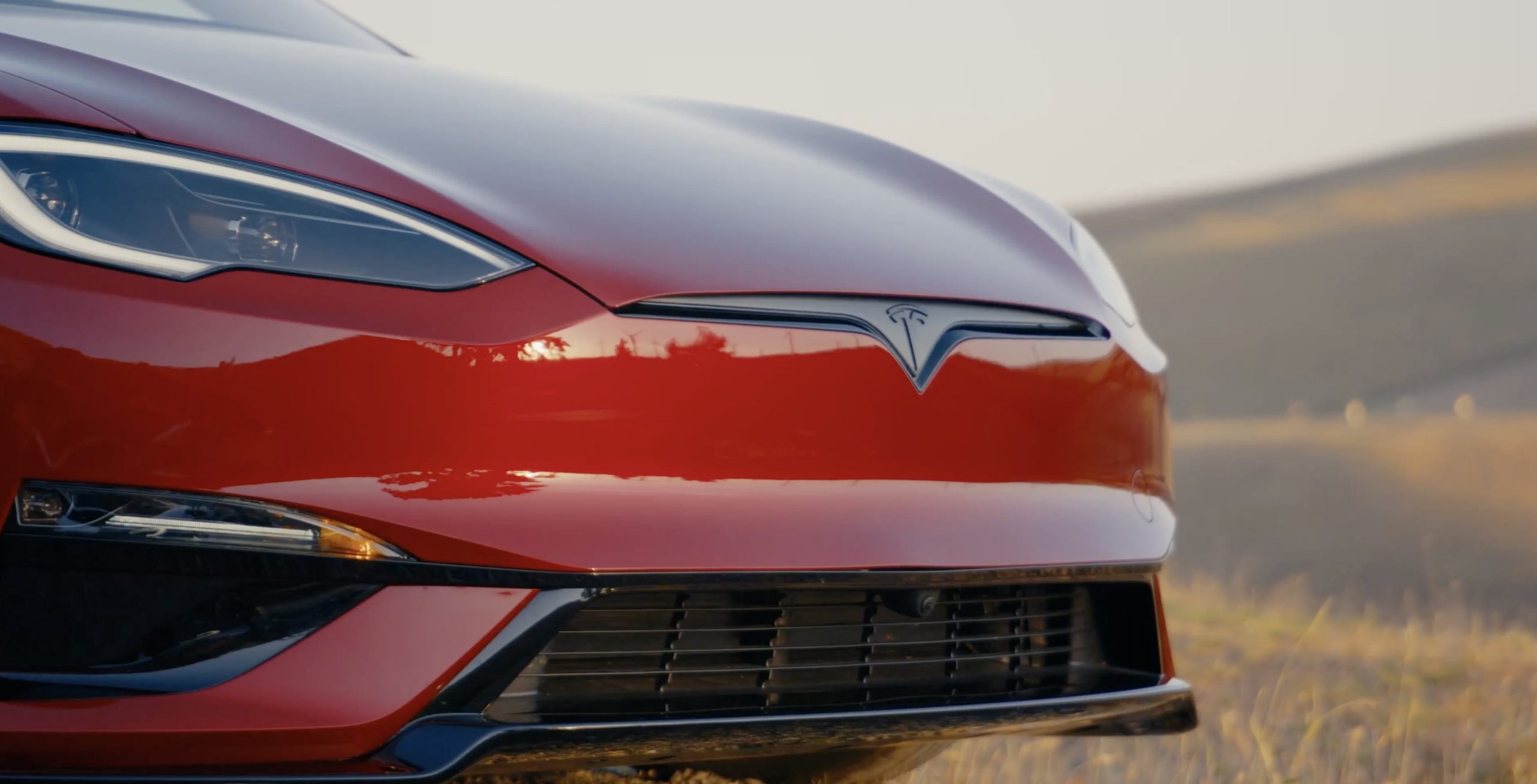

Tesla Model S
Tesla Model S ranked in Car and Driver’s “Top 10 Quickest Cars of the Decade” list
The 2015 Tesla Model S P90D was recognized by Car and Driver on its “Top 10 Quickest Cars of the Decade” list. Ranked as the eighth fastest car of the 2010’s by the popular automotive publication, the P90D was the only fully-electric car to make it on the list.
Car and Driver (C&D) released the list on December 7, and writer Connor Hoffman states, “There are quicker Teslas, but the company refuses to let us test them. So, from the slim number of Teslas we have tested, the Model S P90D is the quickest one to the 60 mph mark. It was also the first sub 3.0-second zero-to-60 mph sedan we ever tested, reaching the speed in 2.7 seconds.” The 2016 Model S P90D C&D tested was $134,200 and packed a 532 horsepower Dual Motor set up with a weight of 4,842 pounds. It was ranked higher than the 2020 Chevrolet Corvette that came in a #10, and the 2019 Porsche 911 GT3 RS at #9, both capable of a 2.8 second 0-60 MPH acceleration time.
In terms of Hoffman stating there are some Teslas that the company doesn’t allow them to test, he is likely speaking of the yet-to-be-released Tesla Roadster or the Model S Plaid variant that broke several records earlier this year, the P90D is still one of the most impressive vehicles the prestigious automotive publication has had the privilege to test, according to their 2016 review of the car. C&D tested the P90D “Ludicrous” in February 2016, and noted its performance in the publications testing facility as “shocking.” At the time of the review, it was one of only five vehicles C&D had tested that consistently averaged more than 1.0 g forces during the first second of acceleration, joining vehicles like the Porsche 911 Turbo S and the Lamborghini Huracán LP610-4 as some of the only cars in the world capable of this.
“…it’s the first production car with four doors to crack the 3.0-second zero-to-60-mph barrier, doing it in 2.8 seconds. In 30-to-50-mph passing acceleration, it trumps the Tesla Roadster Sport’s all-time record run of 1.5 seconds, also by two-tenths of a second. The P90D’s 11.1-second, 121-mph quarter-mile run, achieved with no hint of tire smoke or exhaust ruckus, merits VIP parking at NHRA headquarters. The Model S P85D in Insane mode, formerly the quickest Tesla, was a half-second slower to 60 and 0.7 second and 7 mph pokier in the quarter-mile,” the review written by Don Sherman said.
P90D has reputation for silencing doubters who say electric cars cannot outperform its petrol-based counterpart. The Model S P90D has regularly outperformed vehicles in drag races courtesy of its 530+ horsepower Dual Motor setup that has been clocked at 10.8 seconds on a quarter-mile dragstrip.
In a 2014 interview with 60 Minutes correspondent Scott Pelley, Tesla CEO Elon Musk said that one of his motives for starting an electric car manufacturer was to “at least address the false perception that people had that an electric car had to be ugly and slow and boring like a golf cart. Musk and Tesla have repeatedly released high-performance vehicles that are battery-powered, do no damage to the environment after production has ended, and regularly outperform some of the most notable sports cars in the world.
Car and Driver listed the 2015 Porsche 918 Spyder as the quickest car of the decade, with a 2.1 second 0-60 MPH time. The Spyder utilizes a 608 horsepower 4.6 liter V8 and two electric motors to achieve this acceleration.

News
Tesla Model S makes TIME’s list of Best Inventions

Tesla’s flagship sedan, the Model S, has officially been named one of TIME Magazine’s Best Inventions of the 2000s. It joins its sibling, the Model 3, which made the list in 2017.
The Model S is among the most crucial developments in the automotive industry in the last century.
Just as the Ford Model T made its mark on passenger transportation, becoming the first combustion engine vehicle to be successfully developed and marketed at a time when horse and buggy were the preferred mode of transportation, the Model S revolutionized things a step further.
Although it was not the first EV to be developed, the Tesla Model S was the EV that put EVs on the map. In 2012, TIME recognized the Model S as a piece of technology that could truly transform the car industry.
The publication wrote:
“This electric four-door sedan has the lines of a Jaguar, the ability to zip for 265 miles (426 km) on one charge—that’s the equivalent of 89 m.p.g. (2.6 L/100 km)—and touchscreen controls for everything from GPS navigation to adjusting the suspension.”
Looking back, TIME was right on. The Tesla Model S was truly a marvel for its time, and it, along with the OG 2008 Roadster, can be seen as the first two EVs to push electrification to the mainstream.
As TIME described this year, the Model S “proved to be a game-changing experience for electric vehicles,” and it ended up truly catalyzing things for not only the industry, but Tesla as well.
The Model S acted as a fundraiser of sorts for future vehicles, just as the Model X did. They paved the way for the Model 3 and Model Y to be developed and offered by Tesla at a price point that was more acceptable and accessible to the masses.
The Current State of the Tesla Model S
The Model S contributes to a very small percentage of Tesla sales. The company groups the Model S with the Model X and Cybertruck in its quarterly releases.
Last year, that grouping sold 85,133 total units, a small percentage of the 1.789 million cars it delivered to customers in 2024.
Things looked to be changing for the Model S and the Model X this year, as Tesla teased some improvements to the two cars with a refresh. However, it was very underwhelming and only included very minor changes.
Lucid CEO shades Tesla Model S: “Nothing has changed in 12 years now”
It appeared as if Tesla was planning to sunset the two cars, and while it has not taken that stance yet, it seems more likely that the company will begin taking any potential options to heart.
CEO Elon Musk said a few years ago that the two cars were only produced due to “sentimental reasons.”
Lifestyle
Tesla Model S Plaid battles China’s 1500 hp monster Nurburgring monster, with surprising results
There is just something about Tesla’s tuning and refinement that makes raw specs seem not as game-changing.

The Tesla Model S Plaid has been around for some time. Today, it is no longer the world’s quickest four-door electric sedan, nor is it the most powerful. As per a recent video from motoring YouTube channel Carwow, however, it seems like the Model S Plaid is still more than a match for some of its newer and more powerful rivals.
The monster from China
The Xiaomi SU7 Ultra is nothing short of a monster. Just like the Model S Plaid, it features three motors. It also has 1,548 hp and 1,770 Nm of torque. It’s All Wheel Drive and weighs a hefty 2,360 kg. The vehicle, which costs just about the equivalent of £55,000, has been recorded setting an insane 7:04.957 at the Nurburgring, surpassing the previous record held by the Porsche Taycan Turbo GT.
For all intents and purposes, the Model S Plaid looked outgunned in Carwow’s test. The Model S Plaid is no slouch with its three motors that produce 1,020 hp and 1,420 Nm of torque. It’s also a bit lighter at 2,190 kg despite its larger size. However, as the Carwow host pointed out, the Model S Plaid holds a 7:25.231 record in the Nurburgring. Compared to the Xiaomi SU7 Ultra’s record, the Model S Plaid’s lap time is notably slower.
Real-world tests
As could be seen in Carwow’s drag races, however, Tesla’s tech wizardry with the Model S Plaid is still hard to beat. The two vehicles competed in nine races, and the older Model S Plaid actually beat its newer, more powerful counterpart from China several times. At one point in the race, the Xiaomi SU7 Ultra hit its power limit due to its battery’s temperature, but the Model S Plaid was still going strong.
The Model S Plaid was first teased five years ago, in September 2020 during Tesla’s Battery Day. Since then, cars like the Lucid Air Sapphire and the Xiaomi SU7 Ultra have been released, surpassing its specs. But just like the Model Y ended up being the better all-rounder compared to the BYD Sealion 7 and the MG IM6, there is just something about Tesla’s tuning and refinement that makes raw specs seem not as game-changing.
Check out Carwow’s Model S Plaid vs Xiaomi SU7 drag race video below.
News
This signature Tesla feature is facing a ban in one of its biggest markets
The report indicates that Chinese government agencies have concerns “about failure rates and safety issues with the flush design.”

A signature Tesla feature is under fire in one of the company’s largest markets, as regulators in one EV hot spot are mulling the potential ban of a design the automaker implemented on some of its vehicles.
Tesla pioneered the pop-out door handle on its Model S back in 2012, and CEO Elon Musk felt the self-presenting design was a great way to feel like “you’re part of the future.”
It is something that is still present on current Model S designs, while other vehicles in the Tesla lineup have a variety of handle aesthetics.
According to Chinese media outlet Mingjing Pro, the company, along with others using similar technology, is facing scrutiny on the design as regulators consider a ban on the mechanism. These restrictions would impact other companies that have utilized pop-out handles on their own designs; Tesla would not be the only company forced to make changes.
The report indicates that Chinese government agencies have concerns “about failure rates and safety issues with the flush design.”
However, EVs are designed to be as aerodynamically efficient as possible, which is the main reason for this design. It is also the reason that many EVs utilize wheel covers, and sleek and flowing shapes.
However, the Chinese government is not convinced, as they stated the aerodynamic improvements are “minimal,” and safety issues are “significantly elevated,” according to The Independent.
The issue also seems to be focused on how effective the handle design is. According to data, one EV manufacturer, which was not specified in the report, has 12 percent of its total repairs are door handle failure fixes.
There are also concerns about the handles short-circuiting, leaving passengers trapped within cars. Tesla has implemented emergency latch releases in its vehicles that would prevent passengers from getting stuck in their cars in cases of electric malfunctions or failures.
However, evidence from the Chinese Insurance Automotive Technology Research Institute (C-IASI) suggests that 33 percent of door handles using this design fail to function after a side impact.
Obviously, Tesla and other automakers could introduce an alternative design to those vehicles that are affected by the potential restrictions China intends to impose. The regulation would take effect in July 2027.








